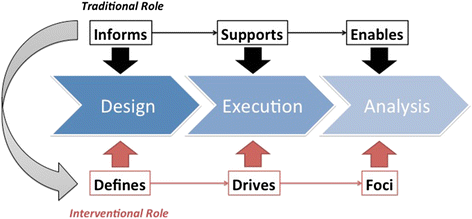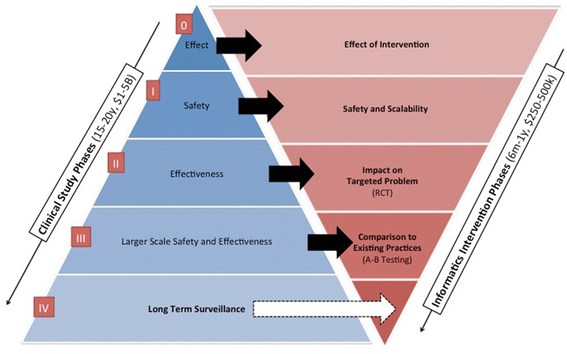Rethinking the role and impact of health information technology: informatics as an interventional discipline
- PMID: 27025583
- PMCID: PMC4812636
- DOI: 10.1186/s12911-016-0278-3
Rethinking the role and impact of health information technology: informatics as an interventional discipline
Abstract
Recent advances in the adoption and use of health information technology (HIT) have had a dramatic impact on the practice of medicine. In many environments, this has led to the ability to achieve new efficiencies and levels of safety. In others, the impact has been less positive, and is associated with both: 1) workflow and user experience dissatisfaction; and 2) perceptions of missed opportunities relative to the use of computational tools to enable data-driven and precise clinical decision making. Simultaneously, the "pipeline" through which new diagnostic tools and therapeutic agents are being developed and brought to the point-of-care or population health is challenged in terms of both cost and timeliness. Given the confluence of these trends, it can be argued that now is the time to consider new ways in which HIT can be used to deliver health and wellness interventions comparable to traditional approaches (e.g., drugs, devices, diagnostics, and behavioral modifications). Doing so could serve to fulfill the promise of what has been recently promoted as "precision medicine" in a rapid and cost-effective manner. However, it will also require the health and life sciences community to embrace new modes of using HIT, wherein the use of technology becomes a primary intervention as opposed to enabler of more conventional approaches, a model that we refer to in this commentary as "interventional informatics". Such a paradigm requires attention to critical issues, including: 1) the nature of the relationships between HIT vendors and healthcare innovators; 2) the formation and function of multidisciplinary teams consisting of technologists, informaticians, and clinical or scientific subject matter experts; and 3) the optimal design and execution of clinical studies that focus on HIT as the intervention of interest. Ultimately, the goal of an "interventional informatics" approach can and should be to substantially improve human health and wellness through the use of data-driven interventions at the point of care of broader population levels. Achieving a vision of "interventional informatics" will requires us to re-think how we study HIT tools in order to generate the necessary evidence-base that can support and justify their use as a primary means of improving the human condition.
Keywords: Biomedical research; Informatics; Research design.
Figures


References
Publication types
MeSH terms
Grants and funding
LinkOut - more resources
Full Text Sources
Other Literature Sources

